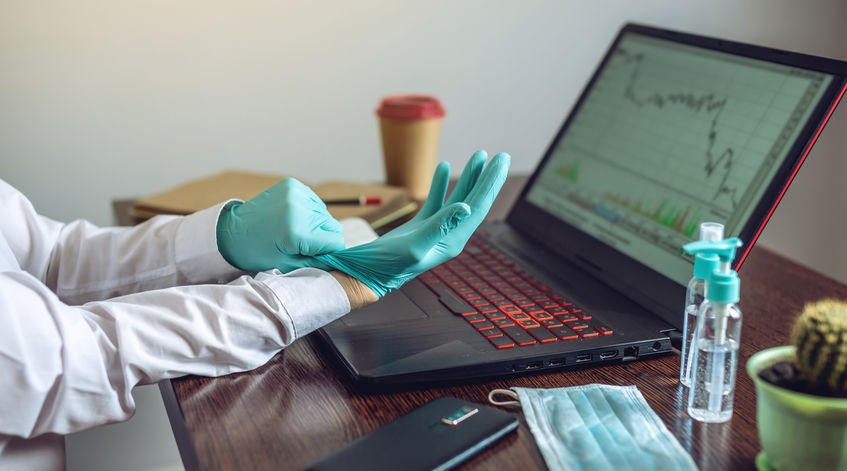InfoGuard AG (Headquarter)
Lindenstrasse 10
6340 Baar
Switzerland
InfoGuard AG
Stauffacherstrasse 141
3014 Bern
Switzerland
InfoGuard Com-Sys GmbH
Frankfurter Straße 233
63263 Neu-Isenburg
Germany
InfoGuard Deutschland GmbH
Landsberger Straße 302
80687 Munich
Germany
InfoGuard Com-Sys GmbH
Am Gierath 20A
40885 Ratingen
Germany
InfoGuard GmbH
Kohlmarkt 8-10
1010 Vienna
Austria
Why in Cyber Security, Hygiene is the Be-All and End-All too

Especially over the past year, we have found out how important it is to maintain proper hygiene. However, this is also true not just for us human beings, but also for IT. Routine IT and cyber hygiene help protect against cyberattacks and keep systems operating properly. In this article, we tell you the difference between IT hygiene and cyber hygiene, as well as the tasks that you ought to be including in your hygiene routine.
It is probably clear to everyone by now how important hygiene is in protecting us from diseases like Covid-19. But what exactly do we mean by hygiene? Hygiene is the science of maintaining your health, but this does not just apply to us humans. Last year, once again, the incidence of cyberattacks increased markedly. Particularly in stressful times, not just during the pandemic, companies have to deal with a lot of things at the same time and often forget about the unremarkable routine tasks that keep performance going and protect against cyberattacks, so a "hygiene routine" needs to be put in place. High data volumes, complex, sometimes unclear infrastructures and inadequate levels of security awareness amongst staff – these are all factors that can give viruses a free rein. High degrees of complexity are the nemesis of good IT hygiene and make it difficult to keep track of all endpoints in wide-spread networks, so it may be high time to rethink your own hygiene strategy.
IT vs. cyber hygiene
Having healthy IT is the foundation for effective cyber security. So what is the difference between IT hygiene and cyber hygiene? For people, washing their hands is what regular updates, cleaning the memory caches and defragmenting the hard disks are for computers. This keeps their data and the infrastructure "in good health". Systems need to function correctly and data integrity and high availability have to be safeguarded. Thus, maximum efficiency is guaranteed by maintaining systems properly and taking care of the infrastructure, which in turn reinforces the defensive wall against cyberattacks.
However, cyber hygiene is predominantly about the practices and precautions that keep sensitive data organised and protected against external cyberattacks, ransomware and data theft. At its core, cyber hygiene is no more than a security routine that is applied to as many security processes as possible.
5 points that your IT & cyber hygiene need to cover
Unfortunately, just washing your hands is not enough to protect yourself against viruses, and the same applies to IT systems. The following points should be included in your routine maintenance:
- Patches & Updates
Patching is the be-all and end-all, a way of eradicating vulnerabilities as much as possible and preserving the systems' performance. Regular vulnerability scans and the required patches are essential, but particularly with complex systems this can rapidly turn into a mammoth task. The magic word is vulnerability management! The importance of making patches available cannot be underestimated, especially in these times when everyone is working from home, which is why you need to pay particular attention to them. - Endpoint Security
Protection measures can quickly be compromised and the visibility of all end devices, including private (mobile) devices, used for work can easily disappear from view. This makes end users more vulnerable, and hackers can easily spread sideways through networks. Endpoint security is not just part of the regular hygiene routine, it is an ongoing process. You can use a platform that helps you control, secure and manage endpoints, such as Tanium’s Endpoint Detection & Response Platform. - Identity Protection & Access Management
"Clean" user and access management is central to protecting IT systems. However, user authentication is only one aspect. Are you always kept up-to-date about all the changes that have been made? Exactly. Check your user management regularly and manage access based on the principle of "as much as is necessary, as little as is possible". To help you with identification, there are modern, highly efficient identity protection and access management solutions. - Back-up Strategy
Many companies don't know enough about their data and what a backup strategy needs to involve, but we are generating an incredible amount of information every day that needs to be protected. Just imagine the scale of damage a data theft can cause if your information is not properly safeguarded. Whether you are using a traditional storage medium or a Cloud, regular (daily!) back-up is essential for cyber hygiene. Find out what a backup strategy should include in our whitepaper. - Password Management
We probably don't need to explain here how important secure passwords are, but how can you be certain that your staff is using really "strong" passwords? For one thing, you should set up the guidelines so that a minimum number of letters as well as numbers and special characters have to be included. However, your policy also needs to include ongoing password updates. For example, you should set a time frame so that a new password has to be created every 90 days. Do not forget to include an additional verification factor. Today, multi-factor authentication (MFA) is best practice, and it significantly reduces the risk of phishing and brute force attacks. This is particularly true for the growing number of remote desktop protocol (RDP) endpoints, which have come increasingly under attack since the pandemic started.
IT & cyber hygiene – it’s not optional, it’s a necessity!
The importance of having comprehensive IT and cyber hygiene routines cannot be underestimated. When used in conjunction with robust, company-wide security practices, sound hygiene practices will help to maintain your organisation's security posture.
How good is your IT security? Is your hygiene routine really good enough? Why not use a penetration to test put your IT infrastructure, systems and organisation and find its hidden vulnerabilities? In this way, you can optimise your cyber security − and of course cyber hygiene − in a sustainable way.
Blog

Agentische KI im Angriff: Wie Human-AI-Teaming die Cyberabwehr neu ausrichtet

Zero Trust 2026: Diese 4 Schritte funktionieren in IT, OT & Cloud-first


